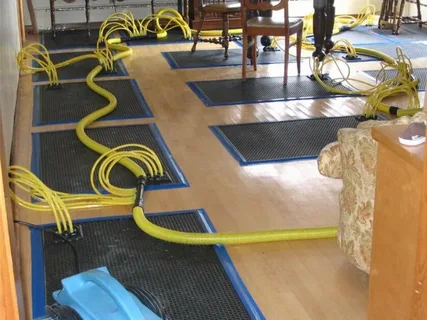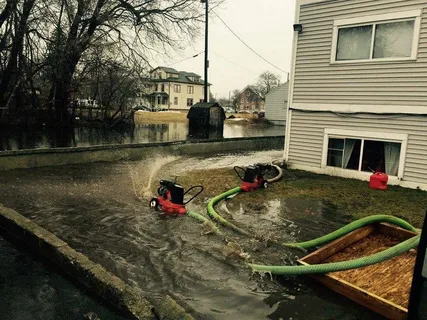
How to Prevent Mold Growth After Water Damage
Water damage, if not addressed immediately, can lead to severe issues, including the growth of mold. Mold thrives in moist environments and can develop rapidly, causing health risks and damaging your property. Preventing mold after water damage requires quick action and the right strategies.
In this guide, we’ll walk you through effective steps to keep your home safe from mold and maintain a healthy indoor environment.
Why Mold Forms After Water Damage
When water infiltrates your home, it creates a perfect environment for mold to thrive. Mold spores, which are always present in the air, need moisture to grow. Surfaces like walls, carpets, and furniture become breeding grounds if they remain damp for long periods. Without intervention, mold can start forming within 24 to 48 hours.
Steps to Stop Mold Growth After Water Damage
1. Dry the Affected Area Immediately
Acting swiftly is crucial to prevent moisture from settling in.
- Use fans, dehumidifiers, and open windows to improve air circulation.
- Mop up standing water and dry out wet surfaces thoroughly.
- Move damp items like furniture and rugs outside to dry under the sun.
2. Remove Items Beyond Repair
Some materials may retain moisture and become prime spots for mold.
- Discard water-damaged items like carpets, insulation, or drywall.
- Replace porous materials that cannot be thoroughly dried or cleaned.
3. Clean and Sanitize All Surfaces
After removing water, cleaning the area is vital to eliminate any spores.
- Use a mixture of water and a mild detergent or bleach solution to disinfect surfaces.
- Focus on corners, hidden spots, and areas behind furniture for complete sanitation.
4. Control Indoor Humidity
Moisture control is key to avoiding mold.
- Maintain humidity levels below 50% using a dehumidifier.
- Install exhaust fans in bathrooms, kitchens, and laundry areas to reduce moisture buildup.
5. Check for and Fix Leaks
Undetected leaks can cause repeated moisture exposure.
- Inspect roofs, walls, and plumbing for any cracks or leaks.
- Ensure your home’s drainage system is working correctly to divert water away from the foundation.
Signs That Mold Might Be Growing
Even with preventive efforts, mold might still develop in hard-to-reach places. Look out for:
- Unusual Smells: A persistent musty or earthy odor is a common indicator of mold.
- Stains or Spots: Black, green, or gray discoloration on walls, ceilings, or floors.
- Health Symptoms: Sneezing, coughing, or eye irritation in occupants could signal mold exposure.
Why Professional Help May Be Necessary
In cases of extensive water damage, hiring experts can ensure effective restoration. Professionals offer:
- Advanced drying equipment to reach areas hidden from view.
- Detailed inspections to detect and eliminate hidden mold growth.
- Safe and efficient disposal of contaminated materials.
Preventing Mold Growth in the Future
Proactive measures can help you safeguard your home from future mold outbreaks.
1. Improve Air Circulation
- Open windows to let fresh air in regularly.
- Use ceiling fans to keep air moving in closed spaces.
2. Waterproof Your Home
- Seal cracks in walls and floors with waterproof materials.
- Install sump pumps in basements to prevent water buildup during heavy rains.
3. Monitor Humidity Regularly
- Use a hygrometer to measure humidity in different areas of your home.
- Invest in a whole-house dehumidifier if you live in a humid region.
4. Schedule Routine Maintenance
- Regularly check plumbing, roofs, and gutters for damage or blockages.
- Inspect appliances like washing machines and refrigerators for leaks.
Health Impacts of Mold Growth
Mold exposure can lead to health concerns, especially for those with allergies, asthma, or weakened immune systems. Symptoms may include:
- Persistent coughing or sneezing.
- Skin irritation or rashes.
- Breathing difficulties or chest tightness.
Addressing mold early helps protect your loved ones from these risks.

Conclusion
Preventing mold growth after water damage involves prompt action and careful attention to detail. By drying affected areas, controlling humidity, and cleaning thoroughly, you can minimize the risk of mold developing. If the damage is extensive or mold persists, consider seeking professional assistance.
At Mold Restoration Miami, we specialize in water damage restoration and mold prevention. Contact us today to restore your home and safeguard your indoor environment from mold. Take the first step toward a mold-free, safe living space!
